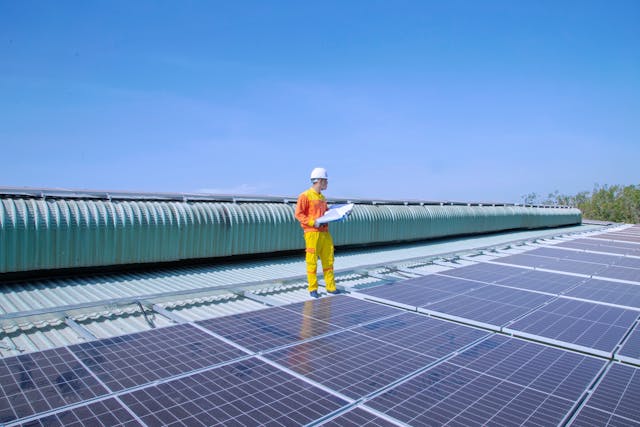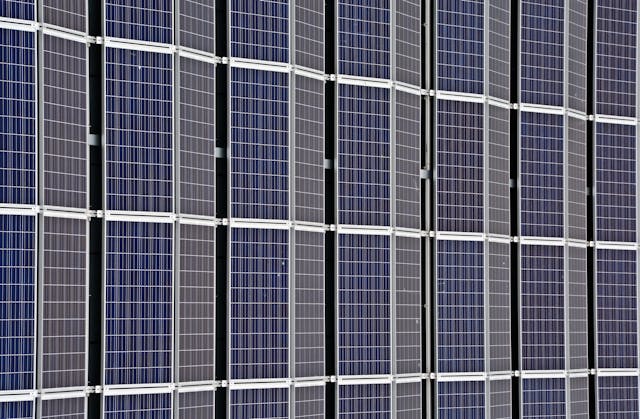Type of designing services we provide
A pre-feasibility solar design process is an essential preliminary step in evaluating the viability of a solar power project before committing significant resources to detailed engineering and site assessments. It helps determine whether a proposed solar installation is technically and financially feasible and sets the stage for further detailed planning and development.

1. Site Selection and feasibility analysis
2. Solar Module layout-GA
3. 3D modelling of the plant include photos and videos
4. Right Pitch selection to reduce shadow impact
5. Proper Tilt selection to get maximum Yield
6. p-50 & p90 Analysis with accurate energy estimation report by PVsyst
7. Right component selection with high efficiency and within the budget
Location Analysis:
Review geographical data to assess the solar irradiance (sunlight availability) of the area. Factors such as latitude, typical weather patterns, and historical climate data are considered.
Physical Site Inspection:
Check for physical constraints like available space, shading from nearby trees or buildings, and roof condition (if a rooftop system).
Infrastructure Examination:
Evaluate existing electrical infrastructure to determine the ease of integrating a new solar system with the grid or existing power setups.
Energy Usage Analysis:
Gather data on current energy consumption patterns to estimate the size of the system needed. This involves analyzing energy bills or using energy monitoring tools.
Demand Patterns:
Understand when energy demand peaks, which is crucial for sizing and potentially deciding on additional features like battery storage.
Preliminary System Design:
Using software tools and solar calculators, propose a basic layout and sizing of the solar array, including the orientation and tilt of solar panels.
Technology Selection:
Decide on the type of solar panels (e.g., monocrystalline, polycrystalline, thin-film) and inverters based on cost, efficiency, and local availability.
Permitting and Codes:
Identify any zoning restrictions, building codes, or electrical regulations that must be adhered to.
Incentives and Subsidies:
Research available government or local incentives, rebates, and tax breaks that can influence the financial model.
Cost Estimation:
Estimate the total upfront costs, including equipment, installation, and any potential grid connection fees.
Financial Projections:
Use models to project the economic outcomes such as return on investment (ROI), payback period, and net present value (NPV) based on various scenarios of energy production and usage.
Sensitivity Analysis:
Perform sensitivity analyses to understand how changes in key assumptions (like changes in electricity prices or solar panel costs) could impact the project's financials.
Compile Findings:
Assemble all data into a comprehensive pre-feasibility report that outlines all findings, analyses, and recommendations.
Stakeholder Review:
Present the findings to stakeholders (project owners, investors, potential customers) for decision-making.
For the pre-feasibility study, various tools and software can be used, including:
PV simulation software like AutoCAD, Google Skechup, PVsyst, Helioscope for detailed Engineering.
The pre-feasibility study aims to provide a clear picture of the project’s viability and potential roadblocks before moving into more expensive and detailed planning phases, thereby minimizing risk and optimizing resource allocation.

1. Solar Module layout-GA
2. Single line Diagram
3. Electrical Scheme
4. LA and Earthing Layout
5. Equipment layout
Detailed BOM
6. Walkway and Lifeline Layout
7. String Layout
8. Cable Calculation
9. Planset with NEC Codes
Micro-Level Analysis:
Conduct a thorough site inspection to identify specific site conditions like roof integrity, ground conditions, and potential obstructions that could affect panel placement.
Sun Path Analysis:
Use advanced tools to analyze the sun's path and its impact on the proposed installation site to optimize panel orientation and tilt for maximum solar gain throughout the year.
System Layout:
Create detailed CAD drawings or use specialized solar design software to map out the exact placement of each panel, inverter, and other system components.
Electrical Design:
Design the complete electrical layout, including wiring, inverters, connection to the main power system, and additional components like meters and monitoring systems.
Structural Engineering:
If necessary, involve structural engineers to ensure that buildings or ground mounts can safely support the weight and stress from the solar panels, especially in regions susceptible to environmental stressors like high winds or snow.
High-Performance Panels:
Choose solar panels that offer the best efficiency, durability, and warranty conditions tailored to the specific climate and installation environment.
Inverters and Batteries:
Select inverters that match the system size and configuration. Choose battery storage systems if the design includes energy storage for off-grid or hybrid configurations.
Balance of System Components:
Pick all additional components like mounting systems, cables, connectors, and protective devices such as fuses and circuit breakers.
Regulatory Compliance:
Ensure that the design complies with local, state, and national building codes, electrical codes, and any specific solar photovoltaic regulations.
Permit Acquisition:
Prepare and submit necessary documentation to obtain all required building and electrical permits. This may include site plans, system specifications, and safety plans.
Software Simulations:
Use sophisticated modeling software to simulate system performance, taking into account historical weather data and site-specific conditions to predict energy production and system efficiency.
Optimization:
Adjust the design based on simulation results to optimize the system for energy output, cost efficiency, and reliability.
Detailed Cost Analysis:
Provide a detailed breakdown of all costs, including hardware, labor, permits, and ongoing maintenance.
Incentive and Rebate Application:
Assist in applying for applicable rebates, tax credits, and other incentives to reduce the overall project cost.
ROI and Payback Analysis:
Update financial projections such as return on investment and payback period calculations based on the final design and cost estimations.
Technical Documentation:
Prepare detailed installation manuals, operation manuals, and maintenance guides.
Project Report:
Create comprehensive reports that include design details, projections, and operational guidelines for installers, financial backers, and clients.
Vendor Coordination:
Manage the procurement process to ensure that all components are ordered, delivered, and meet specified standards.
Installation Planning:
Coordinate with installation teams to plan the deployment phase, ensuring all tools and human resources are aligned.
CAD Software:
For precise drawings and layouts.
PV System Design Software:
Like HelioScope, PVsyst for detailed performance analysis and virtual testing.
Detailed solar design services are critical for ensuring the technical and financial success of a solar project. They transform initial concepts into actionable, efficient, and compliant installation plans that are ready for execution, bridging the gap between theoretical assessment and practical implementation.
Copyright © 2024 Evergreen Solar | All Rights Reserved.